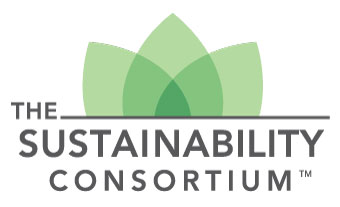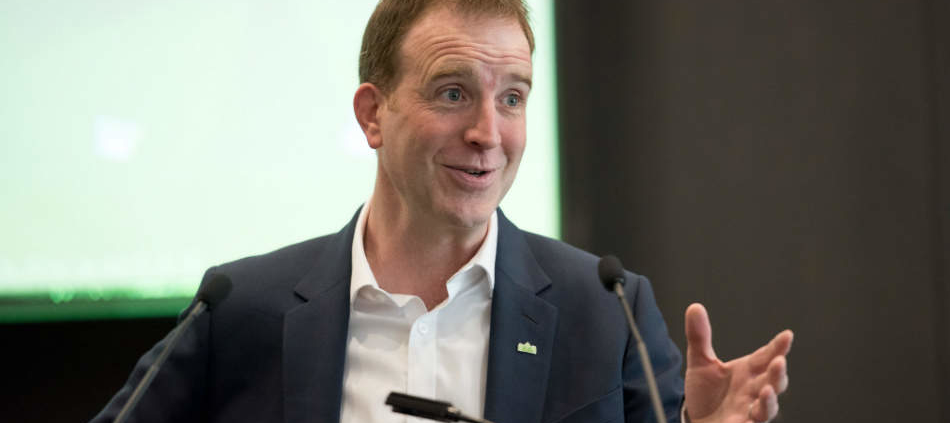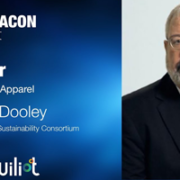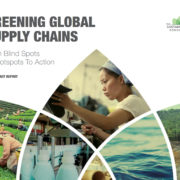The Sustainability Consortium’s CEO Reflects On Its 10-Year, Trillion-Dollar Impact
News from GreenBiz

Euan Murray, CEO of The Sustainability Consortium.
Sustainability partnerships among corporations, nonprofits, academics and other strange bedfellows come and go. But in its 10th year, The Sustainability Consortium’s work is just getting started in gathering some of the world’s biggest businesses to improve the supply chains of countless consumer products.
TSC has come a long way from its origins alongside the development of Walmart’s Sustainability Index, created so the retailer could measure the sustainability of every item on its shelves. Given the multi-tentacled nature of global supply chains, the effort to create such standards necessarily had to be a distributed one. Thus TSC formed with such founding members as Dell, P&G, SC Johnson, Unilever and Waste Management.
Today, the nonprofit’s more than 100 members reflect a wide swath of sectors, including Amazon, Mars, Wrangler and Zoned Properties, and its impact likely extends to thousands more companies. TSC offers scores of tools, trainings and reports. Its Sustainability Index is getting an update and new name this summer; TSC and SupplyShift are partnering on the THESIS (The Sustainability Insight System) Index that will improve communication between suppliers and retailers about products.
TSC’s foundation on science and collaboration among seeming competitors is a natural fit for CEO Euan Murray, who succeeded Sheila Bonini in 2016. He has served in leadership at TSC for seven years, worked previously as the Carbon Trust’s carbon footprinting director, and holds a master’s in materials science from Cambridge University.
Elsa Wenzel: How do you explain what The Sustainability Consortium is, and what it does?
Euan Murray: We’re working to future-proof the global economy. It’s by taking that sustainability lens and building it into how companies think about their operations, but more importantly, how they think about their products and their supply chains, so that goods are delivered to all of us as end consumers in a way that maximizes positive impact and minimizes the downsides.
Wenzel: What does The Sustainability Consortium offer to member companies? What do you tell them when they ask, “What’s in it for me?”
Murray: We have a staff, but really the consortium is its members. …The network that we’ve created [includes] some of the biggest, most forward thinking, most influential retailers and food and consumer goods companies in the world, some of the most important social and environmental NGOs and a whole raft of leading sustainability experts.
We internalize a lot of the complexity, but out of that comes … solutions that they can all take back to their organizations … back into their supply chain. … A typical retailer has an impact consistent with its size. When you then look at the supply chain of everything that they sell, then the impact goes up by at least 10 times. If you look then downstream at the use of those things they sell, then we’re often talking about 100 times the direct impact.
Wenzel: When you’re talking to companies interested in potentially joining, there are significant membership fees. How do you make the case that it’s worth it for them, the return on that investment?
Murray: In the membership, we have about 100 organizations today, but then through the use of our work … the Sustainability Index and beyond, we’re touching on several thousand companies who use our tools, our sustainability snapshots and sustainability supply-chain diagrams to understand where their own hotspots are, and our KPIs. … In that several thousand we’re helping Walmart and Kroger and Walgreens and so on manage the performance of more than $200 billion worth of annual consumer purchasing — a big chunk of the retail and consumer goods economy there.
Then in the membership itself, what brings those companies to the table? … We’re a translation service that takes complicated sustainability science and turns it into insight, to help companies understand what they should do tomorrow to make things better than they were yesterday…. We can help those member companies deliver on their overall sustainability objectives and do it faster, do it more easily and do it with greater impact than they would be able to do on their own.
Wenzel: Since you became CEO in 2016, what’s been the biggest surprise that you’ve seen so far?
Murray: The biggest surprise here is really how much is going on —almost in spite of all the political headwind in the U.S. and Europe. … Many more people are doing this work in sustainability because they see that sustainability makes good business sense. … They buy the logic that taking a sustainability-minded approach will make them better businesses by de-risking their supply chains, by helping them manage supply chain costs more effectively by helping them tap into new markets.

A glimpse at TSC’s THESIS Index.
It’s also been easier to help organizations collaborate than I ever expected. We bring together competing retailers. We bring together business partners who negotiate over prices every day. … By getting the framing right, by showing them there are win-wins there and it’s a safe space in TSC for them to come and collaborate, we’ve been able to achieve much more than I ever expected.
Wenzel: Is The Sustainability Consortium having a ripple effect, maybe, of copycat efforts or partnerships?
Murray: The point of difference is that the overall approach that we take, there are lots of great organizations there that give you ratings on companies. Where we’re different is that focus on products. If you think about it from a consumer perspective, when we go out and buy a Snickers bar, we’re buying a Snickers bar. We’re not buying a part of Mars, Incorporated. That same logic is true when we’re working with the procurement and buying teams of retailers and consumer brands. That way of thinking was really quite new when TSC was started 10 years ago.
We spent the last couple of years pulling together scores of different initiatives in the agriculture supply chain. The project was called the Data Landscape Mapping Project. … Really what that did was help create a common language and terminology in that whole industry without asking anyone to give up what makes their initiative unique and valuable.
What we’re getting to is the point where, for the farmer let’s say, the data that’s gathered by their tractor automatically can then be used directly in their farm management software, and then that same data can be used for the other reporting needs of their corporate customers and their customers’ customers. We’ve created links in the chain that go right along the supply chain. We’ve launched a web tool and an API so that a company can, let’s say they use Field to Market or the Cool Farm Tool. They can put their existing data into one of those tools … and then in real time, that’s automatically calculating their results against our KPIs. … We’re able to join the dots along the supply chain and simplify everything for all of the different initiatives and all the different companies that are working there so that we’ve got good, compatible data. We have retailers and brands at one end of the supply chain managing their part of the supply chain using the same data as the farmers generating on the farm.
Wenzel: TSC names its areas of innovation in six key areas: circularity in batteries; sustainability and coffee; waste water and textiles; food waste; IPM (integrated pest management); reducing worker exploitation. Which of those areas do you see gaining the most momentum? What do you see the most excitement around?
Murray: There are some common themes: Firstly, it’s a well recognized sustainability issue. Typically, it’s a systemic issue or there’s some sort of market failure where right now, everyone’s acting rationally, but that’s what’s causing the issue rather than solving it. Companies recognize that they need to act, but they know that they can’t do it alone, that the issue’s really just too big for one company to solve. Often, that’s also where there’s a set of shared suppliers that lots of different brands or lots of different retailers are buying from.
Thirdly, that there’s room for collaboration to frame the problem and identify the solutions. Then ultimately, out of that, there’s room for competition, where companies can differentiate.

A chicken supply chain diagram by TSC.
There are a couple of other topics that we’re leading the charge on. … One of those is green chemistry, where we are helping the home and personal care industry take the next step in figuring out the ingredients for the future for their products.
The second one is work we’ve just started doing in clothing use. …The clothing supply chain of getting clothes to the point of sales is increasingly well understood and well managed, but what happens once a consumer buys something is much less clear. We’ve recently received from funding from Target to take a look at this. We’re just recruiting volunteers, and we are embedding sensors in the clothes of these volunteers to see how they use them.
Out of this are going to come great benefits for the circular economy, and also to help product designers make sure that the clothes they’re designing are ultimately fit for purpose, because they’ve got some real data for the first time on how things are used. Then of course, we can have some fun with it as well, because we’re not just getting fantastic sustainability data, but we’re also going to be able to tell if you wash your socks as often as you say you do. …
One of the side benefits of us doing this work as an open, nonprofit organization, is that … we’ll publish the approach and a lot of those results, too, in a way that avoids this becoming a proprietary bit of IP for one company. … That’s de-risking it for a lot of people. … If you want to volunteer, we would love to have you involved.
Wenzel: That’s great. I don’t know about my socks though.
Murray: Well, that’s fine.
Wenzel: Could you tell me more about your interest in the circular economy, in particular?
Murray: There’s maybe a bit of a myth out there that Europe is ahead. … In some cases, it’s true, but in a lot of other cases, the North American market has caught up and maybe even overtaken.
It’s kind of unsexy, but the best ever example that I’ve seen of circular economy thinking is actually lead-acid batteries in cars. In the U.S. and other western markets, about 96 percent of lead-acid batteries are collected and recycled at the end of their lives. That is an incredible success story. Yet we know looking forward in really just a couple of years, we are going to be in a situation where the lead-acid battery no longer exists at any scale like that.
New chemistries, lithium and other chemistries are dominant in automotive. We want to make sure that that great success in existing technologies isn’t lost, and that we’re able to replicate that and recreate those circular models in new lithium-iron batteries for automotives for the future.
Wenzel: The previous TSC impacts reports have had a focus on, respectfully, engagement and transparency. Do you have future areas of focus in mind?
Murray: There are still thousands, probably tens of thousands of major companies out there who are only just getting started. It’s important for us to work with the leading companies as we do. Yet, if we’re really going to move whole markets and solve the problems we want to solve, then we’ve got to work with the middle and shift the middle as well.
The other big new area for us is working in our innovation program on the circularity projects that we’ve just talked about, on some of the other projects that you referenced earlier around food waste and so on.
If I’m to characterize our history as an organization, then the first 10 years of our life has been focused on helping companies understand sustainability. The next 10 years is about getting our sleeves rolled up and actually solving it.
Wenzel: On the TSC website there is a list of areas inviting people to contribute financially to them. Can you explain what that’s about?
Murray: A big chunk of our work is funded by our corporate members. We also receive a number of grants from different foundations and grant giving bodies to support the organization. We increasingly see that there’s growth and interest from the wider community from just people out there who want to learn more about sustainability, who see the good work that we’re doing and want to contribute. Even if they’re giving us $5 through the button there, then that’s $5 that we’re delighted to have.
Wenzel: Your background includes a master’s in materials science, involving metallurgy. How does that inform your current work or other areas of focus?
Murray: Well, I guess I’m a bit like TSC. We bring together companies and NGOs and sustainability experts to find shared solutions. … I embody a little bit of all of those. I’m a scientist by training and so I understand the strengths of that and also the limitations.
I also spent the early part of my career in strategy consulting and financial services. I grew up on a farm. I experienced firsthand what it takes to make a small business run. Yet, I also care deeply about the sustainability mission of our organization. There’s a host of reasons for that.

The TSC Product Finder.
Before joining The Sustainability Consortium, before even I joined the Carbon Trust in London prior to that, I spent three months in the desert in Namibia in southern Africa. It was an amazing project. We brought 20 teenagers from local communities and also from disadvantaged backgrounds in the U.K., and our project for that three months was to help build the infrastructure for a new national park. … I also realized that all of that would be lost if I went back home and we didn’t solve climate, and we didn’t solve water, and we didn’t solve over-consumption in the west.
What I bring with my scientific background, but also my appreciation of how companies run, and my love for the oryx antelope that I got to help conserve when I was there in Namibia, really is what makes me tick.
Wenzel: What advice would you give to people early in their career, especially given that your career path has been winding through all these different areas? If someone wants your job someday, what would you tell them to do?
Murray: I mentor a couple students at Arizona State University. … They are just so switched on in a way that I think frankly I never was at that age. …
It’s also staggering to me that I’m probably the last generation to work in sustainability that doesn’t have a sustainability qualification. Those things didn’t exist when I was getting into this. I think people are stepping forward now with just a much greater understanding, a much greater grounding in the basics of this. Giving them advice on any of that, I honestly feel underqualified.
No one has a monopoly on wisdom there. We know that this is a rapidly evolving area and everyone has something they can do. Everyone has a solution that they can bring to the table.
If I want to impart anything, it’s the idea that young people in the early part of their career have a voice as big and as strong as mine. I guess you just need to look at Greta Thunberg and the youth strike for climate movement and the enormous impact she has had, a single 16-year-old girl from Sweden. She’s done more in her career so far than I have done or probably ever will.
No one has the monopoly on that wisdom, or the ability to act. “Be brave” is probably the single bit of advice that I would give. Don’t be shy. Step forward. You are the next generation that will solve these things working with us. I’ve been doing it for a while, and if everyone steps forward with that mindset, does their best, thinks creatively, works tirelessly, we will solve this.
Wenzel: What is the single greatest achievement or impact that the TSC has made in the first decade? The second part: What would you like that to be in another 10 years?
Murray: First off, we built one of the biggest, if not the biggest database, of sustainability science on consumer products anywhere in the world. Then in doing that, we’ve created this network of over 100 of the biggest, most influential companies and NGOs and sustainability experts, and got them focused on that mission. We work with the retailers and brands to embed the sustainability systems into their business operations and into their business decision-making.
It’s not a separate sustainability team, but it’s part of how they engage with their suppliers and how they buy products every day. … We estimate that the ripple effects of that across the wider economy to be over $1 trillion of annual economic activity. Now we’re seeing out the back of that, that over the last three years, there’s been a 30 percent improvement in the transparency and the traceability and sustainability of the products and supply chains from those companies that are using our tools.
We’ve got to that scale. … Then I think as I look forward to the next 10 years, well, some things will stay the same. For us, facts matter and we’ll continue to be led by the science, wherever that takes us. We’ll see also a growing focus on innovation, where companies and other experts are coming together to work together with us to solve some of those trickiest sustainability problems that they can’t solve alone.
